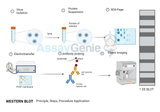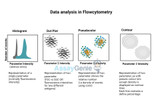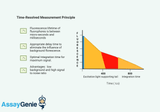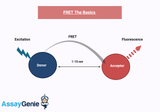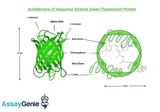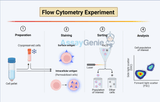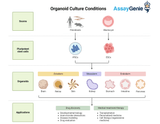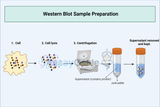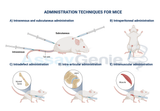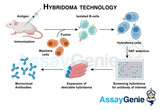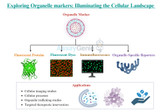Blog
Western Blot Training: A Comprehensive Guide
Western blotting, a cornerstone technique in molecular biology, biochemistry, and immunogenetics, is pivotal for detecting specific proteins in a sample. Its applications span various scientific fields, including research and diagnostic processes. This comprehensive guide delves into the intricacies of western blot training, encompassing its principles, procedural steps, and troubleshooting strategies, aiming to equip practitioners with a thorough understanding of this essential technique. Understanding Western Blotting: Western blotting is a highly specific and sensitive technique used to detect and quantify the presence of specific proteins in a complex mixture. The method invo
…
17th Mar 2024
Data Analysis in Flow Cytometry: Harnessing Complexity for Scientific Insight
Flow cytometry is a powerful analytical technology employed in cell biology, immunology, and oncology research. It enables the rapid measurement of physical and chemical characteristics of cells or particles as they pass through a laser beam. The core of this technology's utility lies in its ability to analyze thousands of particles per second, providing a wealth of data on cell populations. This article delves into the intricacies of data analysis in flow cytometry, focusing on its principles, methodologies, and applications, and highlighting the critical role of advanced data analysis software and algorithms in extracting meaningful insights from complex datasets. Principles of Flo
…
16th Mar 2024
Time-Resolved Fluorescence (TRF): A Comprehensive Introduction
Time-Resolved Fluorescence (TRF) technology is a cutting-edge analytical technique that has revolutionized the fields of biochemistry, immunology, and molecular biology. By offering a refined approach to measuring fluorescent signals, TRF circumvents many of the limitations associated with traditional fluorescence measurements, providing researchers with a tool of unparalleled sensitivity and specificity. Understanding Time-Resolved Fluorescence TRF is based on the principle of delayed fluorescence detection. Unlike conventional fluorescence methods that measure signals immediately after excitation, TRF allows a short delay before measuring the fluorescence. This delay is crucial
…
14th Mar 2024
Understanding Blotchy Western Blots: Causes and Remedies
Western blotting is a powerful and widely used technique in molecular biology, essential for detecting and quantifying specific proteins in complex biological samples. However, despite its popularity, Western blotting can sometimes yield frustrating results, with one of the most common issues being blotchy or uneven bands. Blotchy Western blots can arise from various factors, ranging from sample preparation to technical errors during the blotting process. In this article, we'll delve into the potential causes of blotchy Western blots and provide some tips to rectify them. What are Blotchy Western Blots? Blotchy Western blots refer to the uneven distribution of bands across
…
13th Mar 2024
Control Samples Required for ELISA Protocol
Enzyme-Linked Immunosorbent Assay (ELISA) is a powerful analytical biochemistry assay that utilizes antibodies and color change to identify a substance. It is widely used in the field of immunology to detect the presence of antibodies or antigens in a sample. The accuracy and reliability of ELISA depend significantly on the use of appropriate control samples throughout the protocol. This article delves into the essential control samples required for ELISA to ensure the validity and reproducibility of the assay's results. Positive and Negative Controls Positive ControlA positive control is an integral component of the ELISA protocol, serving as a benchmark to confirm that the ass
…
2nd Mar 2024
Fluorescence Resonance Energy Transfer (FRET) Assays: An Insight into Molecular Interactions
Fluorescence Resonance Energy Transfer (FRET) assays represent a pivotal technique in the molecular and cellular biology fields, enabling the examination of protein interactions, nucleic acid structures, and membrane dynamics. This non-invasive method relies on the energy transfer between two light-sensitive molecules, providing insights into molecular distances and interactions with high sensitivity. Understanding FRET: The Basics FRET is a distance-dependent interaction between the electronic excited states of two dye molecules, a donor and an acceptor. When these molecules are within 1-10 nm of each other, energy transfer can occur, leading to fluorescence emission from the ac
…
1st Mar 2024
Unveiling the Potential of Cy3 Wavelength: Illuminating the Path to Advanced Biomedical Imaging
In the realm of biomedical imaging, the quest for precision and clarity drives researchers to explore innovative technologies. One such breakthrough is the Cy3 wavelength, a powerful tool revolutionizing fluorescence imaging techniques. This article delves into the significance, applications, and advancements of Cy3 wavelength in biomedical research. Understanding Cy3 Wavelength:: Cy3, short for Cyanine 3, is a fluorescent dye belonging to the cyanine dye family. Its exceptional properties make it a popular choice for labeling biomolecules and tracking biological processes under a microscope. Cy3 emits light in the red-orange spectrum, typically around 570 to 590 nanometer
…
23rd Feb 2024
Choosing a Fluorescent Protein: A Comprehensive Guide
Fluorescent proteins (FPs) have revolutionized the field of molecular and cellular biology, allowing scientists to visualize and track biological processes in live cells with unprecedented clarity and specificity. Originating from the green fluorescent protein (GFP) discovered in the jellyfish Aequorea victoria, the palette of available FPs has expanded to include a rainbow of colors. This article provides a detailed overview of factors to consider when choosing a fluorescent protein for your research, ensuring optimal results for your specific applications. Understanding Fluorescent Proteins The Basics of FluorescenceFluorescence occurs when a substance absorbs light at one wav
…
17th Feb 2024
Navigating the Intricacies of Intracellular Flow Cytometry: Key Considerations
In the evolving landscape of cellular biology, intracellular flow cytometry (ICFC) stands out as a powerful technique for analyzing the complexities within cells. This advanced method extends the capabilities of traditional flow cytometry by allowing researchers to investigate intracellular proteins, signaling pathways, and specific gene expressions within individual cells. ICFC has become indispensable in various fields, including immunology, oncology, and drug discovery, offering insights that are pivotal for understanding disease mechanisms and developing therapeutic strategies. However, harnessing the full potential of ICFC requires meticulous attention to several critical considerat
…
16th Feb 2024
Optimizing Organoid Culture Conditions: Paving the Way for Revolutionary Advances in Biomedical Research
In the dynamic landscape of biomedical research, organoids have emerged as a groundbreaking tool, offering three-dimensional (3D) models that mimic the complex architecture and functionality of human organs. These miniature, self-organizing structures have revolutionized our approach to understanding human development, disease modeling, and drug discovery. However, the key to harnessing their full potential lies in optimizing organoid culture conditions. This intricate process involves fine-tuning the biochemical and physical environment to support the growth, differentiation, and maturation of organoids. This article delves into the critical aspects of organoid culture, including the se
…
14th Feb 2024
What is the difference between PBS and dPBS?
In the realm of biological and biochemical research, solutions play a pivotal role in various experimental procedures, from cell culture to molecular biology assays. Among the plethora of solutions utilized, phosphate-buffered saline (PBS) and Dulbecco’s phosphate-buffered saline (DPBS) stand out as crucial components. While both solutions share similarities, they possess distinct compositions and applications that merit exploration and understanding. Phosphate-Buffered Saline (PBS): A Versatile Solution PBS, a staple in laboratories worldwide, serves as a fundamental isotonic buffer solution utilized across diverse applications. Its composition typically consists of
…
8th Feb 2024
Transduction vs Transfection: Understanding Gene Delivery Techniques
In the realm of molecular biology and genetic engineering, the ability to deliver genetic material into cells is fundamental for various research and therapeutic purposes. Two common methods employed for this purpose are transduction and transfection. While both techniques facilitate the introduction of exogenous genetic material into cells, they differ significantly in their mechanisms and applications. This article aims to elucidate the distinctions between transduction and transfection, highlighting their respective advantages, limitations, and applications. Transduction: Transduction is a process by which genetic material is transferred into a cell via a viral vector.
…
8th Feb 2024
Guide to Western Blot Sample Preparation
Western blotting remains a pivotal technique in the molecular biosciences for the detection, quantification, and analysis of proteins. Its utility spans numerous fields, including immunology, developmental biology, and disease diagnostics. A critical determinant of success in Western blotting is the quality of sample preparation. This guide delves into the nuances of preparing samples for Western blot analysis, ensuring that researchers can achieve reproducible and meaningful results. Key Points to be Discussed Introduction to Western Blotting Sample Collection and Storage Protein Quantification Sample Buffer Preparation and Use Sample Denaturation and Loading Troubleshooting C
…
6th Feb 2024
Mouse Injection Guide (Subcutaneous, Instramuscular & Intraperitonael)
In scientific research involving mice, the administration of substances via injection is a common practice. Whether delivering drugs, antibodies, or experimental compounds, precise injection techniques are crucial for obtaining accurate and reliable results. This article provides a comprehensive guide on how to inject mice for scientific research, covering key aspects such as preparation, different types of injection techniques, execution, and post-injection care. Preparation: Before performing any injections, it's essential to properly prepare both the mice and the injection materials. Here's a step-by-step guide to preparation: Mouse Preparation: Handle mi
…
4th Feb 2024
Serum vs. Plasma: A Deep Dive into Their Molecular Makeup and Implications for ELISA
Blood plasma and serum are essential components of blood and have distinct molecular compositions and uses in the medical and research fields. This article aims to elucidate the differences between serum and plasma and respond to the most frequently asked questions. Key Takeaways: Serum is blood fluid without clotting factors; plasma contains these factors. They're crucial in medical research, including ELISA, to measure various analytes. Different collection methods are used for serum and plasma. What is Serum vs Plasma? Blood consists of red and white cells, platelets, and a liquid portion, known as plasma. When blood is collected and coagulates, the solid components,
…
24th Jan 2024
Hybridoma Technology: Revolutionizing Antibody Production
Hybridoma technology, a revolutionary method in immunology pioneered by Georges Köhler and César Milstein in the 1970s, has transformed the landscape of antibody production. This groundbreaking technique has had a profound impact on various scientific domains, from diagnostics to therapeutics and basic research. In this essay, we explore the intricacies of hybridoma technology, its diverse applications, and its pivotal role in advancing our understanding and treatment of diseases. The Birth of Hybridoma Technology: The genesis of hybridoma technology lies in the fusion of two distinct cell types: B cells, responsible for antibody production, and myeloma cells, which possess the a
…
23rd Jan 2024
Exploring Organelle Markers: Illuminating the Cellular Landscape
The eukaryotic cell is a complex and dynamic system with distinct membrane-bound compartments known as organelles, each performing specialized functions essential for cellular survival. To better understand the intricate workings of these organelles, scientists employ organelle markers – molecular tools that provide a means to visualize and study these structures. In this article, we delve into the fascinating realm of organelle markers, discussing their significance, types, and applications in unraveling the mysteries of cellular biology. Organelle Markers: Painting a Molecular Canvas Organelle markers play a pivotal role in cell biology research by allowing scientists to
…
11th Jan 2024
In Vitro vs In Vivo: Complete Comparison + Selection Guide | Research Methods
Discover the distinct roles of 'In Vivo' and 'In Vitro' in biological research, where one offers a natural context and the other precise control, both vital for scientific advancement. Key Takeaways: "In Vivo" studies are within living organisms, offering physiological relevance. "In Vitro" studies occur outside organisms, allowing controlled experiments. Both methods are complementary, each providing unique scientific insights. "In Situ" studies observe phenomena in their natural environments. In the field of biological research, scientists employ various experimental methods to understand complex biological processes. Two fundamental approaches at the forefron
…
2nd Aug 2023
Transfection: A Comprehensive Guide
Transfection protocols play a crucial role in the realm of molecular biology and genetic research, enabling the introduction of foreign nucleic acids into living cells. This innovative technique allows scientists to manipulate gene expression, study protein function, and investigate cellular processes with remarkable precision. This article focusses on the fundamental principles underlying transfection protocols, exploring their significance and various approaches employed for achieving successful genetic delivery
Table of Contents
Jump to a section:
- Cell Transfection
- Applications
- Mechanism
- Transfection vs Tr
…
12th Jul 2023
Transformation Protocol – Sample Transformation Protocols
Introduction Transformation of bacteria with plasmids is not only of note for bacterial studies but also can be used for gene expression studies in mammalian cells. Most plasmids are of bacterial origin and contain both a bacterial origin of replication and an antibiotic resistance gene which can be used as a selectable marker. The process of transformation allows foreign DNA to be introduced into a cell. Genetic modifications can be made to various bacterial strains to make them more amenable to transformation. Such modifications will maintain the plasmid without rearranging the plasmid DNA. Certain treatments have been shown to increase the transformation efficiency of bacteria.
…
27th Jun 2023
Mycoplasma in Cell Culture Detection Guide
As a PhD student delving deep into the realm of cellular biology, there is one antagonist that consistently challenges my research: mycoplasma. This microscopic bacterium, with its ability to invisibly infiltrate and undermine cell cultures, has become a persistent foe. However, understanding the intricacies of this bacterial contaminant is the first step towards effective mitigation.
window.SHOGUN_IMAGE_V2_ELEMENTS = window.SHOGUN_IMAGE_V2_ELEMENTS || new Array();
window.SHOGUN_IMAGE_V2_ELEMENTS.push({ hoverImage: '', uuid: 's-9662d6e3-0a1e-4340-82be-21f2d6baf7d7' })
Schematic of Mycoplasma
The Invisible Enemy: Understan
…
28th May 2023
Renal and Hepatic Function Assays
Hepatic Function Assays
Liver function assays are a suite of tests designed to assess the health and efficacy of our vital organ: The liver. This hardworking powerhouse is responsible for creating bile, eliminating toxins, and breaking down fats, carbohydrates and proteins – all necessary elements that keep us ticking!
To evaluate the liver's health, there are various hepatic function assays that can be performed. These tests measure the organ's capacity to produce bile, metabolize toxins and drugs, as well as synthesize proteins and carbohydrates. By assessing these three factors of liver performance with an
…
7th Mar 2023
Flow Cytometry Protocol | 10 Hints & Tips
Flow Cytometry Protocol
The meaning is in the name:
Flow = in motion, Cyto = cells, Metry = measure.
What is Flow Cytometry?
Flow cytometry measures the properties of cells while in a fluid stream. It enables single cell analysis of complex cellular systems (e.g. blood) very rapidly (100s of cells/second) it also allows you to look at various cellular properties such as size, granularity, fluorescence intensity per cell.
Flow Cytometry can be used for cell counting, cell sorting, biomarker detection and protein engineering. Cell components are fluorescently labelled and then excited by the laser to emit light at varying wave
…
7th Nov 2022
Cell Synchronisation Methods
What is Cell Synchronisation?
Cell synchronisation is a process by which cells at different stages of the cell cycle in a culture are brought to the same phase. Cell synchronisation is used to study the progression of cells through the cell cycle.
How are Cells Synchronised?
Cells can be synchronised and separated in 2 different ways:
Chemical Blockade
Physical Fractionation
1. Chemical Blockade
As the names suggests this method uses chemicals such as Thymidine to block metabolic reactions. This can be achieved through inhibition of DNA synthesis largely during the S-Phase of the cell cycle. Inhibitors such as thymidine, aminopterin
…
26th Oct 2022

